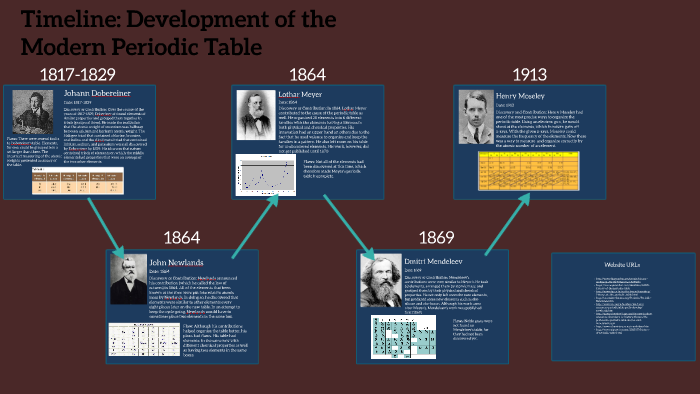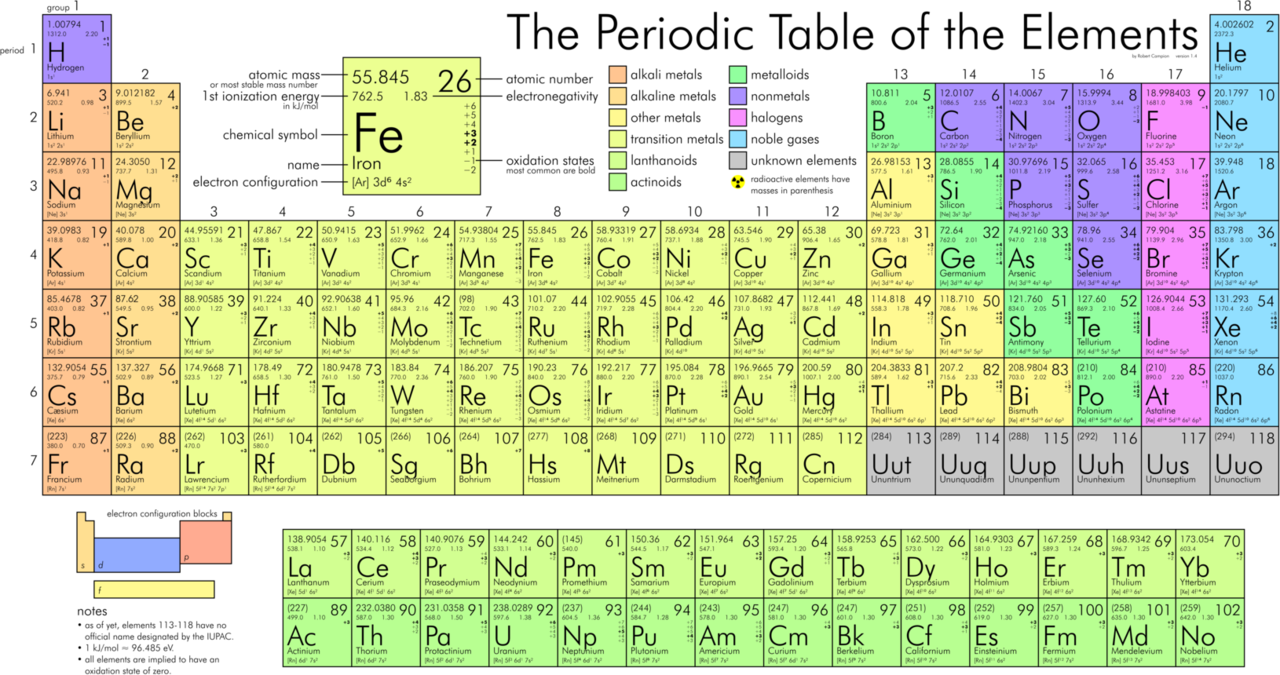Describe the Development of the Modern Periodic Table
Lavoisier organized a list of the known elements of his day as four categories. Include contributions made by Lavosier Newlands Mendeleev and Moseley.

Describe The Contribution Of John Newlands In The Development Of The Modern Periodic Tabl Periodic Table Of The Elements Element Chart Periodic Table Printable
Development of periodic table.

. The history of the periodic table is a reflection of more than two centuries of growth to understand the chemical and physical properties of the elements. Um and this starts to look a little bit more like our modern periodic table. 1 is usually.
Include contributions made by Lavoisier Newlands Mendeleev and Moseley. Describe the development of the modern periodic table. Describe the development of the modern periodic table.
Chemists have always looked for ways of arranging the elements to reflect the similarities between their properties. The work of John Newlands and Dmitri Mendeleev led to the development of the modern periodic table. Include contributions made by Lavoisier Newlands Mendeleev and Moseley.
The main-sequence of elements within a periodic group have the same number of valance electrons. Includecontributions made by Lavoisier Newlands Mendeleev and Moseley. Several new elements have been discovered and added to the table since then.
Describe the development of the modern periodic table. Development of the periodic table. Features of the.
As a result they react in the same way. Solution for Describe the development of the modern periodic table. Mendeleevs periodic table also organized the elements by increasing atomic mass became the 1st widely accepted organization scheme for the elements.
Include contributions made by Lavoisier Newlands Mendeleev and Moseley. Development of the periodic table The periodic table is arranged in columns called groups. Group 1 consists of highly reactive metals.
Newlands was the first to organize the elements and show that properties repeated in a periodic way. The elements of the modern periodic table are classified into 4 blocks s p d and f. Newlands organized the elements by increasing atomic mass.
The notation in the periodic table includes references to atomic mass and atomic number. Despite its usefulness Mendeleevs periodic table was based. Describe the development of the modern periodic table Get the answers you need now.
Describe the development of the modern periodic table. Include contributions made by Lavoisier Newlands Mendeleev and Moseley. Newlands was the first to organize the elements and show that properties repeated in a periodic way.
Mendeleev who first published his periodic table in 1869 Figure 32. In the 1860s scientists began to try to sort the known elements into a logical sequence. Historically however relative atomic masses were used by scientists trying to organise the.
Scarla5683 scarla5683 09132018 Chemistry Middle School answered Describe the development of the modern periodic table 1 See answer Advertisement Advertisement scarla5683 is waiting for your help. Chemistry 10072019 1200 mayachojnicki. Lavoisier organized a list of the known elements of his day as four categories.
Newlands was the first to organize the elements and show that properties repeated in a periodic way. The major contributions to the development of the periodic table were made by Antoine-Laurent de Lavoisier John Newlands Johann Wolfgang Döbereiner Julius Lothar Meyer Glenn T. Describe the development of the modern periodic table.
The modern periodic table of the elements was published by Dimitri Mendeleev in 1869. The Role of the Atomic Number in the Periodic Table. Next we have Dmitri Mendeleev who was a Russian chemist and what he did is he arranged wth e elements based on the sequence of atomic mass.
Solved Expert Answer to Describe the development of the modern periodic table. The periods in the modern periodic table The periods include the elements of the different properties and they have. The groups are labelled 1 2 transition metals 3 4 5 6 7 and 0 or 8.
The modern periodic table lists the elements in order of increasing atomic number the number of protons in the nucleus of an atom. Um and this starts to look a little bit more like our modern periodic table. Newlands was the first to organize the elements and show that properties repeated in a periodic way.
Lavoisier organized a list of the known elements of his day as four categories. Modern Periodic Table of Elements - Modern Periodic suggest that Physical and chemical properties of the elements are the periodic functions of their atomic numbers. 1 2 3 4 5 6 7 0 transition metals All the elements in a group have similar chemical properties eg.
Modern periodic table The modern periodic table consists of 7 horizontal periods and 16 vertical groups 18 vertical columns. Next we have Dmitri Mendeleev who was a Russian chemist and what he did is he arranged wth e elements based on the sequence of atomic mass. The modern periodic table was devised by Dmitri Mendeleev and is a useful framework for organizing and analyzing chemical and physical behavior of the elements.
Lavoisier organized a list of the known elements of his day as four categories. Add your answer and earn points. Development of the Modern Periodic Table Mendeleevs Periodic Table.
To Learn about the modern periodic table of elements and its significance and also learn about the manner in which the elements are classified across the modern periodic table Visit BYJUS for more information. Describe the development of the modern periodic table. The columns of the modern periodic table are called groups or families.
Seaborg Dmitri Mendeleev and. Include contributions made by Lavoisier Newlands Mendeleev and Moseley Get Best Price Guarantee 30 Extra Discount.

3 2 Development Of The Modern Periodic Table Chemistry Libretexts

Timeline Development Of The Modern Periodic Table By Colby Rookstool

3 2 Development Of The Modern Periodic Table Chemistry Libretexts
Comments
Post a Comment